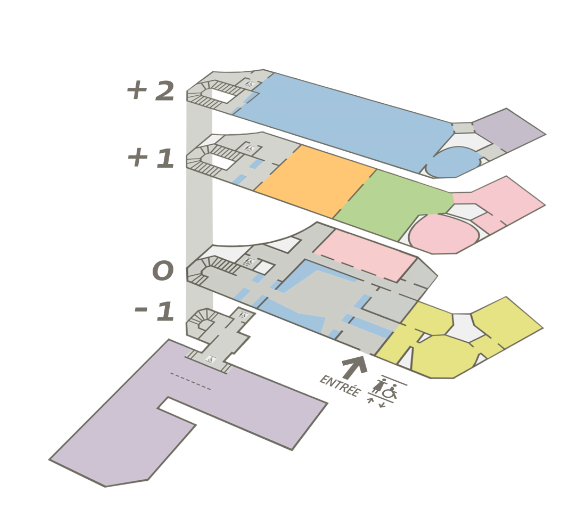This Central African artist, whose paintings with naive overtones are imbued with a desire to awaken the ecological conscience of his fellow citizens, will be taking over the Carré Art et Sciences space at the Museum of Bordeaux.
Inspired by the luxuriant vegetation of his homeland as well as the perils it faces caused by humankind, Wambeti’s paintings translate his dreamlike and ethical visions of his environment. Dieudonné Sana Wambeti especially appreciates the forest wildlife and rich minerals of his native country, but is profoundly concerned by the dangers posed by humans who pillage natural resources through the act of intensive deforestation. The artist paints his feelings onto the canvas and completes the tableau with a text that underscores his message while never detracting from the poetic charge of his painting.
While his artwork has been appreciated for several years on the contemporary African and international art scene, paradoxically the artist still works tirelessly to support his family with his painting. Deeply attached to his native country, despite the terrible economic and material hardships afflicting the place, he has a studio in Bangui where he practises and teaches painting. In this unstable country torn apart by political tensions, devastating ethnic and interconfessional violence and deeply fanatical warring factions, the artist perseveres.
In a landlocked republic in the centre of a vast continent, anxious about the future of his country, Wambeti talks to us about his life, human and social issues and projects his hopes and fears for his compatriots into his paintings. Faced with the ravages that have swept across the region, he advocates for environmental engagement and often justifies his worries by expressing the words of his ancestors. This enduring legacy of an oral tradition is woven into his pictorial imagination in the form of fables, by appearances naive, but utterly poetic and often unexpectedly surrealist.
Conscious of his role as educator among the Central African people, Dieudonné Sana Wambeti is a sage and a fabulist who bears witness to his perception of the world. He is proud of being the ‘ambassador’ for his country, as they have dubbed him, to the extent that he now adds an ‘A’ to his name in recognition. Through his hugely inventive paintings, the artist has the capacity to reach out to everyone, both those who have little understanding of art as well as well-informed connoisseurs.







